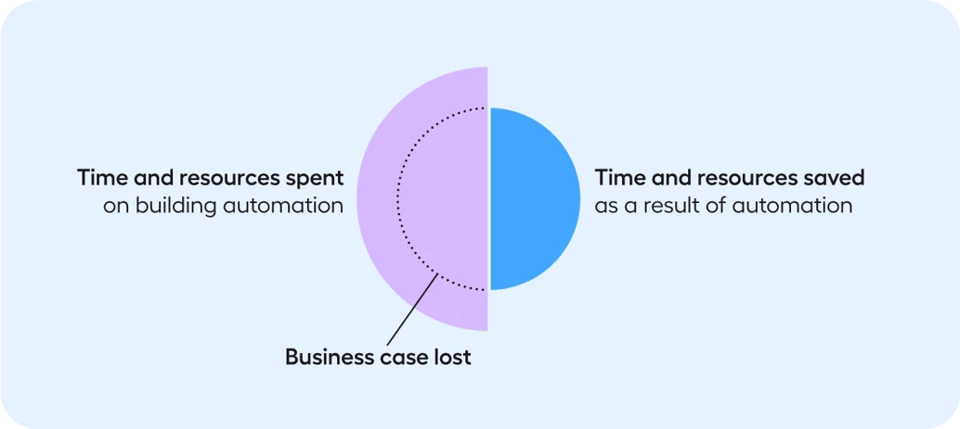What Are the Limitations of the Appium Mobile Testing Framework
There are two sides of the coin when it comes to Appium testing. You love it or you hate it. An experienced developer might find Appium a great tool for iOS and Android testing. A business user or tester who’s not proficient in coding might feel its limitations.
In this post, we’ll talk about the pros and cons of Appium, as well as what to look for in a test automation tool for mobile apps.
You’ll find this information interesting if you’re an enterprise looking to automate native mobile apps, mobile web, or a hybrid.
Skip ahead to:
What to look for in a test automation tool for mobile apps
The pros of Appium testing
- Upfront costs. Appium is a free, open-source framework. Setting up infrastructure in Appium won’t cost much
- Mobile testing. It supports testing on native, web, and hybrid mobile applications
- Operating systems. You can test across iOS, Android and Windows apps
- Programming languages. It supports most programming languages
- Device and operating system combinations. You can test across hundreds of combinations of device types and operating systems (given you have the right plug-ins)
- Set-up. It’s relatively easy to set up Appium
The cons of Appium testing
Appium is still relatively new. So, if you’ve worked with Selenium before, you’re likely to face similar challenges with Appium as in Selenium.
- You have to code Appium tests. A tester has to learn a programming language to be able to automate tests (which can take months). This prevents business users and testers from using automation. It also makes you reliant on developers or those with coding skills to build and maintain tests.
- Heavy maintenance. The scripts that you write in Appium have to be maintained. If you’re using Appium for a small handful of tests, this won’t require much time. However, if you’re an enterprise that has to run mobile app testing as part of your regression suite, this could become a problem. If you don’t regularly maintain the scripts, they will break. The maintenance alone can end up costing your business more than it should.

- Naming conventions and gestures. If your development team doesn’t attribute elements with specific names and IDs, you’ll find it challenging to code selectors to find the elements. If your development team hasn’t been rigorous when adding IDs and specific names to elements, it can become very hard for selectors to work. Testing gestures in Appium is also challenging to code.
- One-on-one support. Compared to a test automation vendor, Appium does not offer one-on-one support. This can be challenging when you need to find a quick solution to a fault in the functionality of Appium. However, there is a community forum where you can seek answers to your questions.
So what should you look for in a test automation tool? And what alternatives are there?
What to look for in a test automation tool for mobile apps
Choosing a test automation tool is an important step on the road to becoming a digital-ready organization.
Part of that process is taking note of the requirements you need in the tool you’re searching for (see below).
- Cross-platform automation. Cross-platform automation. Does the tool work across desktop, web, and mobile? If your business operates in BFSI, automating mainframe greenscreen tests may also be a key consideration. By using the same tool to automate across platforms, you will be able to limit the maintenance of your automated tests.
- Integrates with CI/CD. Make sure the tool is compatible with the DevOps tools and orchestrators that you use in your CI/CD pipeline. If your tool doesn’t allow for easy handovers and facilitates collaboration among your team, it will be difficult to keep up with the development lifecycle.
- Intuitive, and easy-to-use. Does the tool require coding skills that could make the process of learning to use the tool longer? Consider a tool that makes the development and maintenance of tests as intuitive and easy as possible. Tests are a crucial part of ensuring a high-quality app. Testing them shouldn’t have to be a burden too.
- Fast debugging. While it may not be an important requirement for you, it will be for your team. Being able to find the root cause of a problem can have a really positive effect on your ability to move releases through the development process much faster.
- Minimizes maintenance. We’ve mentioned time and time again the maintenance burden you can expect when using code-based solutions like Appium. But not all test automation solutions require heavy maintenance work - the right codeless test automation keeps maintenance low.
- Supports reusability. Solutions that containerize tests and make them reusable bring down the maintenance burden. Simple tests like logging in, or moving items to a shopping cart, are examples of tests that can be made reusable.
- Support for enterprises. As an enterprise, mobile app testing may not be the only solution you are looking to automate. It’s likely part of a larger-scale project that tests the functionality of processes across platforms. Finding a scalable and cost-effective solution will help you be able to internally advocate for the benefits of test automation.
With these requirements in mind, what comes next? If you’ve already prepared your test automation strategy, it may be time to search for the tool that could help you achieve your goals.


